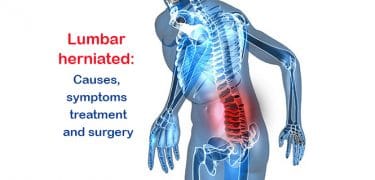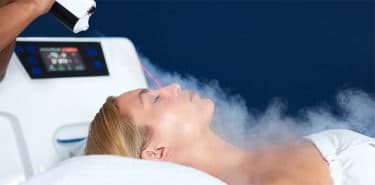Corns and foot calluses, are areas of hard, thickened skin that develop when skin is exposed to excessive pressure or friction. It is caused by skin trying to protect itself from adverse effects. Generally, bone parts of feet are in areas of shoe, but can be seen in hands and skin areas exposed to pressure. In general, treatment is not needed since it does not cause serious complaints. There is a high risk of being seen in people who wearing shoes that fit poorly – shoes that are too loose can allow your foot to slide and rub, who have their foot sweats and are standing up every day. There are many species, some types can reach serious sizes. Corn and calluses treatment may vary depending on type and severity, in some cases surgical treatment may be required.
Table of Contents
What is Callus?
Callus is the thickening of skin caused by excessive pressure and damage; mostly seen in heels of feet, in joints and in palm of hands. The problem is not only thickening of the skin, but pathological condition. In order to place this thickness into the disease category, it should be deep as well as there should be a small point called nidus at the top. It affects women more than men.
Therefore, appearance of the callus is in the form of a funnel. The visible part of a callus is 1 cm and its peak is 1 mm, and skin in this area is unusually thick and hard.
Calluses are not dangerous unless they are infected, but in case of infection you need to see doctor. Corn is another skin disorder that is often confused.
They are usually formed on smooth, lint-free skin surfaces, especially on or near toes. They are generally small and circular with a clearly defined center, which can be soft and rigid. The methods of treatment and prevention are similar to the methods.
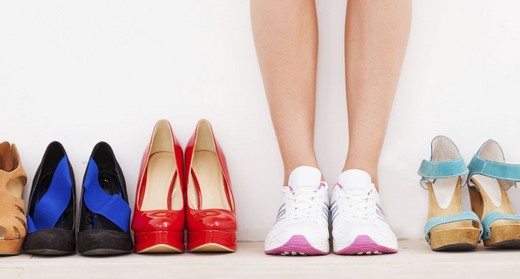
Causes of callus and corn?
- Wearing tight or bad quality shoes
- High heels or shoes that are not appropriate to the size of the feet.
- Barefoot walking for a long time
- Excessive pressure exposure of a particular area of the skin for a long period of time
- Worn outfits’ or belongings’ long-lasting friction to the same area
- Walking on the wrong way, make a wrong move too often
Callus develops when the bone rubs against something like shoes or ground. They usually form on heel because this area is exposed to all our weight when we walk. The main reason is not that shoe is too tight, it is the shoe is making excessive pressure to certain point in every step. This point-like trauma sends a warning to the breain so thickens the skin and seeks to protect it from trauma. Actually, callus is a mechanism of protection rather than a problem, but because it develops in undesired formation, it can begin to persecute the person. Especially athletes can often experience this.
In order to prevent the formation of calluses, individuals must absolutely be sure about the quality of the shoe. Tight and high-heeled shoes can compress foot areas. When the shoe is too loose, the foot can slide over and over again and rub against the shoe.
The foot can also rub against the stitched areas of shoe. Wearing shoes and sandals without socks is also a major cause of callus. Other than that, playing instruments or using hand tools, even continuous writing with pens etc. may be cause of formation of callus.
Symptoms of callus
- Sharp pain in area of callus
- Pain disappears when pressure is removed in mild calluses
- The area of the skin begins to thicken with pain
- As the callus progresses, the area of pain begins to rash
- Inflammation may occur around the hardening skin
- Top zone is formed in the region where the skin is thickened
Callus types
Hard Callus
Bone deformation in the feet is the hardening due to pressure on the skin as a result of abnormal stepping. It is a hardened skin layer with a dense root (center). It can occur on the tips of the toes, on the side and top of the small toe, or under the feet.
Soft Callus
Painful, flowing problems are observed in the spaces between the toes. The formal changes in toes of person cause toes to remain under pressure. Especially wearing pointy-toed and high heeled shoes is the factor that increases the pressure on the toes.
Problems such as hammer finger in the foot of the person, bunion when the toes are compressed in the front part of the foot. This compression causes the deformed structure of the bone to be expanded by pressing the soft tissue between the fingers. It looks as reddish, sensitive region with a diameter of 1-4 cm. It has a smooth and thin center. It can be seen at the outer edges of the toes.
Seed Callus
It is a type of callus, usually composed of dead skin cells, seen on the side and back of the heel. Hard calluses under the foot or on the finger can cause pain due to pressure.
Pain is usually relieved by removing the stiffness of the callus and cleaning the thickened layer. However, in the inner part of the callus, under the skin, callus extract settles and even though calluses are cleaned from the skin, pain and stinging sensation are not lost. It shows itself as intense pain and stinging sensation in every movement of the foot.
There are also genetic types of calluses. Their size can be 2.5 cm width and do not require external factors to be formed. They can be seen under the feet or in the palms and this type is more common in children.
What are foot warts, how to treat them?
Warts, which are usually a benign tumor, occur on the soles of the feet and cause similar complaints with calluses. Warts are microbial and infectious; it infects via wearing the shoes, slippers or socks of the person having plantar warts.
If the medication indicated of wart treatment is used and no improvement seen in two weeks, it is removed surgically or by radio frequency method. During the treatment of someone else’s slippers, socks, shoes should not be worn.
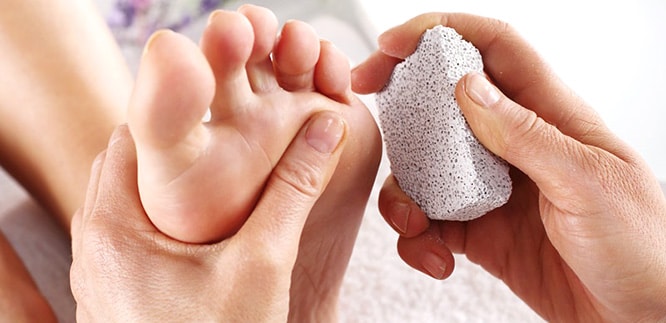
Also, it should not be pressed on the floor with bare feet, especially in public areas such as pools. The wart can be transmitted from one person to another as well as it can spread to the same or opposite foot from one’s own foot or to other parts of the body, causing the problem to become widespread.
Treatment methods are similar to calluses. Even doctors can confuse the wart with the callus in the diagnostic stage. It is important to know the difference between them. Calluses typically have a rough, dull appearance. It can be tipped like a funnel or it can be rounded and it becomes difficult to distinguish it from warts.
Differences between Callus and Wart
- Calluses have smooth surface while the warty surface is rough
- There is severe pain in the callus while pain in the wart is mild
- Calluses are few in number while the number of warts is quite a lot.
- Callouses don’t smell while the warts are having bad smell.
- Calluses are not infectious while the warts are.
- Callus is usually located between the fingers but the warts are located on sole.
Callus treatment
There are many methods for treatment. These methods can be discussed in two topics; home care and surgical methods. Especially in very advanced cases, surgical intervention may be required and these are divided into two groups as operative and non-operative. There are many drugs and creams used in the treatment of calluses.
There is no herbal treatment for callus and the plants sold for this purpose are not effective. However, vinegar and lemon may be used partially in the treatment of calluses.
Home care of calluses
The treatment of calluses is quite simple. It is important to distinguish callus from similar ones with inflammation. When inflamed calluses are trimmed, usually pus and blood flows. However, dead skin cells continue to emerge from under the non-inflammatory ones. If it can be sure that the calluses are normal, treatment methods to be applied at home are:
Callus treatment with pumice stone
Dead skin cells in the region can be eliminated by pumice stone without damaging the skin. Before using pumice stone, callus foot is kept in hot water for up to 10 minutes to soften the thickened areas of skin. Then the dead and thickened skin is filed with pumice stone. This process should be applied every time until the skin is pink otherwise the skin may be thinned and irritated.
After the process, cotton with castor oil is put on the callus then wrapped with bandage. It should be left open during night to be in touch with air. The next morning the bandage is removed and the same procedure is repeated several times until the callus recovers.
Beurer callus remover
It has an emery effect like pumice stone. The shaft, which is wrapped by the paper-shaped emery, is rotated by a small motor. The emery ensures more effortless use. There are different motors in similar structure. It can provide temporary relief, such as a pumice stone, because it is not possible to progress up to the nidus.
Wartner callus pen
The Wartner callus pen is a callus remover with the main active agent TCA (trichloroacetic acid). It works with the natural peeling effect and destroys the damaged area by peeling it away. The pen is positioned in the callous region as the tip is in perpendicular position. The dial at the top of the pen is rotated and wait until the gel reaches to the brush.
The brush with gel is applied to the callus area. During this process, care is taken to ensure that the healthy skin does not exposed to the gel. It is waited on average for 15 minutes in order to the gel gets dry.
Callus treatment with white vinegar
White vinegar, which is one of the most effective methods, has a high acidity rate. Thus, it softens the dead skin. However, it should be used by diluting with water as it has high acid content. Before going to bed, 3/2 of the water glass should be filled with water and the other 3/1 with white vinegar and mixed and applied to the callous area, then bandaged and left until morning. Again, care should be taken that the foot is in touch with air.
The next morning, the bandage is removed and the calluses are rubbed with pumice stone. The callous region will be exfoliated. It is then moistened with olive oil or coconut oil. This method is applied every day until the calluses disappear. Apple cider vinegar can be used instead of white vinegar.
Callus treatment with lemon
Lemon, just like apple cider vinegar contains acid and is very effective in the treatment of calluses. Callus is rubbed with a piece of lemon. Then the lemon is placed on the callus and bandaged. In the morning, lemon is taken. This process is repeated until the callus is destroyed.
Callus treatment with Epsom Salt
If the callus is wetted with epsom salt accompanied by hot water, thickening and hardening calluses may soften. In addition, this method can be protected against infections, as well as to help scratch the hard layer. Hot water is filled into a basin that the foot can enter and a handful of epsom salt is added to it.
After mixing, the hand or foot with calluses is inserted into this water and left for 10 minutes. Ten minutes later the pumice stone rubs the callous region. After cleaning callus area in this way, foot or hand is taken out of water and dried. The process of rubbing is finalized by applying body lotion. This process is repeated until the callus disappears.
Callus treatment with aspirin
Aspirin both relieves pain and hurt caused by calluses and softens the hardening skin. Five to six aspirin are crushed into powder. Half a teaspoon of lemon juice is added and powdered aspirin is brought to a thick consistency like paste.
The prepared paste is applied to the callus area. After this, the area is covered with a plastic bag and wrap in a towel to keep warm and stand for 10 minutes. When the time is up, it is washed and rubbed with pumice stone. Continue until it disappears completely.
Callus treatment with carbonate
One natural method is the carbonate that is put on food in the house of almost everyone and sold in pharmacies under the name of British Carbonate (sodium bicarbonate). Add 2-3 tablespoons of carbonate to a bucket filled with warm water. The feet are inserted into the bucket and are allowed to soften for 15 minutes. Then pumice stone with the callous region hardened skin is poured and skin is thinned until it becomes pink.
There is no herbal treatment of callus. Products sold for this purpose are not effective!
Surgical treatment of callus
Non-Surgical Callus Treatment
It is always the first option. Experts successfully use the radio frequency to remove callus till to its root then bandages the foot. Does not require any sewing or rest. The skin renews itself in a short time and becomes healthy. This painless-painless treatment lasts about 3-5 minutes.
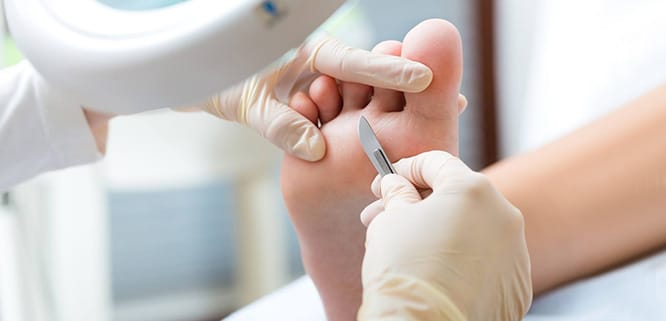
Surgical Callus Treatment
The physician applies anesthesia to the foot, trims out callous region and removes the callus root. Afterwards the stitches are applied then bandaged. During this intervention, it must be ensured that the root is removed otherwise calluses are reproduced. Since it requires sewing, bandaging, resting and dressing, this method is not preferred.
Do not try to cut the calluses yourself because it may cause unintended consequences; such as cuts on the skin which may cause infection. It should be remembered that the foot is a warm and humid environment where bacteria can easily grow.
Callus treatment with medication
Callus treatment with the drug is in fact a temporary solution because the root of the callus is likely to remain under the skin and the callus can be reproduced at least three months later. This method can only help to reduce complaints and postpone the problem.
The callus medicines are acidic, pen-shaped and creamy. As the medications are acidic, they provide softening of the hard upper layer of the callus. The hard layer, which is normally difficult to remove, is easier to clean with acid.
Attention! Although these products are referred to as drugs, they are not sold under pharmaceutical license, which means that they are not in the pharmaceutical class. They are therapeutically adjunctive products.
Callus Band
It is necessary to use it carefully as they are strong and irritant which can be sold without a prescription and with salicylic acid. With the help of the acids in the band, calluses melt and their symptoms disappear. When used incorrectly, these medicated bands can cause the necrosis of healthy skin tissue around the callus and cause allergic reactions.
Even in healthy people, it can be a risk for the skin and may be more dangerous, especially in individuals with circulatory disorders and / or diabetes. In fact, bands will not remain a rooted solution like drugs since the nidus will remain inside. Callus bands are of various sizes; the band that best fits the size of the callus should be selected.
First, the callous area should be washed and dried to make the band stick to the skin. It should separate the medicated blister from the protective surface and place the medicated surface directly on the callus and keep the band in the callous area for three days.
In this application, callus band should not be displaced otherwise it may melt in the healthy skin and cause pain. When the time has expired, it should be sterilized and taken with an object such as a tweezer and tincture d’iode should be applied to the callus. There may be bruising in foot due to the band.
How to prevent callus?
- When buying shoes, make sure that the foot is fully seated, not disturbing when walking. Afternoon time is a good time for shopping, feet swell during the day, and the shoes taken when the feet are swollen are more comfortable in general use. Also shoes should not be too loose.
- High heeled shoes should not be preferred, instead of that flat shoes should be worn
- Silicone pads can be used. Each type is available in pharmacies
- Special sole plates can be used.
- Wear clean socks daily and use talcum powder against perspiration
- Gloves should be used to prevent point friction and impacts, if you need to use a permanent tool for work.
- To soften the dry and hard skin, the feet should be dried and special moisturizing foot cream applied after washing. Using of pumice stone should be turned into a habit.
- The toenails should be kept short. The long toenails can lead to callus formation over time by forcing the toes to push towards the shoe. It is important to keep the toenails short to eliminate this pressure
- Manicure should be done or get done.
See the podiatrist if you’re not sure why you have problems like calluses. These specialist doctors are experts in the diagnosis and treatment of foot problems. It examines the affected area and offers an appropriate treatment. For more:>>> All about Corns

